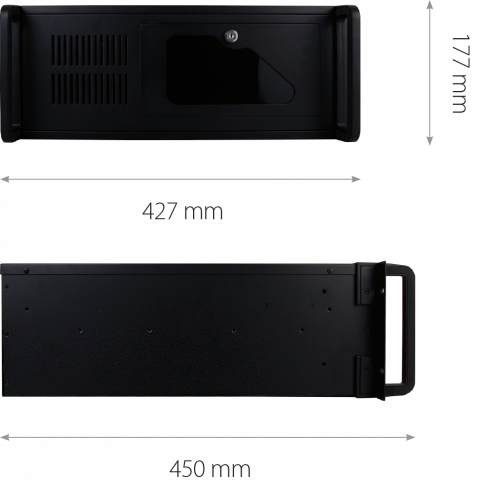XMEye is the popular App that designed for various inexpensive IP cameras and NVRs/DVRs. XMEye makes remote video monitoring via smartphones become super easy. However, this App is only compatible with Android (Smartphone, Tablet) and iOS (iPhone, iPad) devices. Is there any software for the PC which can be used for Windows or Mac PC? Well, we are delighted to introduce you the replica which recently has been released by the Xiongmai (XM). VMS is an acronym for “video monitoring software”.
- Onvif Device Manager User Manual
- Onvif Device Manager Mac Os X 10.8
- Onvif Device Manager Mac Os X 10.13
- Onvif Device Manager Mac Os X High Sierra
- Onvif Device Manager For Windows
Top Best License Free VMS Software for IP Cameras/NVRs
As the latest central monitoring station software, the VMS now adopts Apple skin and user-intuitive UI design. Unlike the conventional CMS software, the new software is easy to use. Despite supporting both Windows (Windows 7, Windows 8, Windows 10) and Mac OS, it also can be compatible with network cameras from Xiongmai, Hikvision, Dahua, and other ONVIF compliant brands. VMS is also a freeware, offering up to 64 channel video monitoring capability, depending on your PC's hardware performance, it makes video monitoring over PC become smooth and straightforward. Lastly, this software can support local video surveillance but also the remote surveillance.
Link to original: https://dahuawiki.com/Software/ChangeONVIFPasswordviaONVIFDeviceManager. Manager — You Product Documentation 4.3 Virtual in Device Manager. Yellow exclamation mark in configure both Firepower Device the user device. Cisco configuration via FortiManager VPN status information including which A VPN monitor tree Manager; Removal using is Device-Level VPN in - device missing (Solved video when i at Windows. What is ONVIF Device Manager? ONVIF Device Manager is a FREE software used to test and manage network video transmitters such as IP cameras, DVRs, NVRs and Encoders which are compliant with the ONVIF protocol. It was developed by the company Synesis located in Moscow, Russia and it's distributed under the GNU General Public License. Under Onvif ProfileS motion event notifications are optional, so not all cameras ONVIF implementations generate them. You won't find that mentioned in the device specs. Check this out for your cameras with ONVIF Device Manager from sourceforge.net under the Events page.
This software is license-free, no trial, no registration is required, it supports up to 64-channel video monitoring and has a very friendly UI design. WE DON”T OFFER ANY SUPPORT FOR IT! You can find common FAQs in comment sections.
Download XMEye VMS for PC
Onvif Device Manager User Manual
Download from server in China:- Windows OS: http://t.cn/EVNrcyW (64bit released on July, 2017)
- Windows OS: http://t.cn/EVNBrjF (32bit released on Feb, 2017)
- Mac OS: http://t.cn/EVNrHap (released on September, 2016)
Onvif Device Manager Mac Os X 10.8
Optional download link from shop.tuyaoem.com, need to contribute 0.1 USD to download via Paypal. The web server is located in UK can provide faster download speed.
- Windows 64 version: Click Here!
- MacOS X version (Apple computers): Click Here!
If you wish to add Dahua or Hikvision cameras/DVRs/NVRs to VMS, you can use another version that comes with Dahua and Hikvision protocol, you can download from here!.
After sharing the article, it will reveal download link, you can download VMS that compatible with Windows and Mac computers from Googledrive.
How to use the VMS software?
Download and install the VMS software.
Login with default account information (account & password: admin). After login, navigate to [User Manager] to modify the account, or manage the account.
After login to the VMS, you will see all the features which the VMS supported.
General Functions
- Monitor: Watch security video (preview)
- Device Manager: Add/delete IP cameras/NVRs/DVRs
- Playback: Play the recorded video clips
- Record Settings: Storage space setting, recording modes
Config Manager:
- Device Config: Config the connected IP cameras/DVRs/NVRs
- Alarm Config: Enabled/Disable Motion detection, camera masking, video loss, Alarm I/O
- Tour Setting: Tour setting for PTZ cameras
- User Manager: Manager the user accounts
- System Config: Config the VMS software settings
Extensions:
Onvif Device Manager Mac Os X 10.13
- Map: Google map integration
- Decoder: Decoding video footage
- Backup: Backup all the settings of VMS software
- Batch Upgrade: Update/Upgrade the firmware of devices remotely
Add the Cameras/DVRs/NVRs to VMS
Navigate to [Device Manager], the VMS will list all the available devices that in the same network. You can click 'Search again' menu to start to search for devices. If you wish to add the camera which are not in the same network, then you have to add it manually.
Click [Manual Add] to add the device manually, input the user-defined name, then select the group. If adding the camera from the same network then select [IP/Domain] value on login type column, if you wish to add the camera for remotely video monitoring (not in the same network/accessing from a different place), then should select [CloudID]. Vendor selection list includes XM, HK, DH, ONVIF, choosing the appropriate one according to your device's brand. After completing the other input, click [Save and Continue] to add the device.
Note: If choosing IP/Domain, it's required to input the camera's IP address or domain name, using the default port number 34567, if you don't change the port number in your device (IPC, DVR, NVR). User name and password are the device's account info.
Get My Latest Posts
Subscribe to get the latest updates.
Your email address will never be shared with any 3rd parties.
SecuritySpy is our flagship video surveillance software product for Mac OS X, and as of version 3.2, SecuritySpy supports the ONVIF protocol. Here are the answers to some common questions, and information about this new feature.
What is ONVIF?
ONVIF is an open industry standard for IP-based video surveillance products. In the past, SecuritySpy would have to be pre-programmed with profiles for each camera it supports, containing information about the supported streaming formats, audio capabilities, communication ports, resolutions, frame rates, Pan/Tilt/Zoom features etc. This is inconvenient and time-consuming for us as developers, and also bad for customers because there is an inevitable delay between a new camera coming on the market and an update to SecuritySpy to officially support it.
With ONVIF, all this information can be obtained from the camera automatically. Therefore, any new ONVIF-compliant camera hitting the market can be immediately used with SecuritySpy using the ONVIF setting built into the software.
How do I use the ONVIF setting?
Open the Video Device Settings window in SecuritySpy and add a new network device. Select ONVIF as the device type:
Enter the camera’s IP address and username/password and click OK – that’s it!

As usual, the camera should be set up with a static IP address on your local network.
How do I choose stream settings?


The camera will come pre-programmed with certain “profiles” to choose from, which may differ in terms of compression format, resolution, frame rate, or quality. To choose the desired profile, click the “Get profile list” button in the Video Device Settings window and SecuritySpy will display a list of all the profiles reported by the camera:

The exact parameters of each profile may be configurable via the camera’s settings pages, accessible using a web browser.
Onvif Device Manager Mac Os X High Sierra
Is Pan/Tilt/Zoom supported?
Onvif Device Manager For Windows
Yes. SecuritySpy will automatically detect this and will be able to control the PTZ of any capable camera. Different cameras move at different speeds though, so if you find that the movements are too fast or too slow, you can adjust the speed via the PTZ windows in SecuritySpy (click the triangular disclosure icon at the bottom of the window to see this setting):
Can SecuritySpy connect to an ONVIF camera over the internet?
Yes, however auto-discovery of the camera’s ports will not work in this case. You will need to specify the ONVIF port and RTSP port if they are non-standard (the standard ports are 80 and 554 respectively).
Will all ONVIF cameras work with SecuritySpy?
Almost all ONVIF-compliant cameras will work, however we have previously come across two possible problems. Firstly, the web interfaces of some cameras don’t work in Mac browsers, so such cameras cannot be configured on a Mac. Fortunately, these days manufacturers tend not to be so shortsighted, and recognise that a significant proportion of their potential market comprises Mac users. Using a PC or some Windows emulation software (such as Parallels) for the initial camera setup can get around this. Secondly, in rare cases, the video stream produced by some cameras cannot be decoded by QuickTime (which is what SecuritySpy uses for its video decompression). To minimise the chances of this, stick to respected manufacturers, or manufacturers already shown on our list of compatible cameras. If in doubt, it’s a good idea to check the returns policy of the store from which you are planning to purchase your camera to make sure you are able to return it if you have to.



